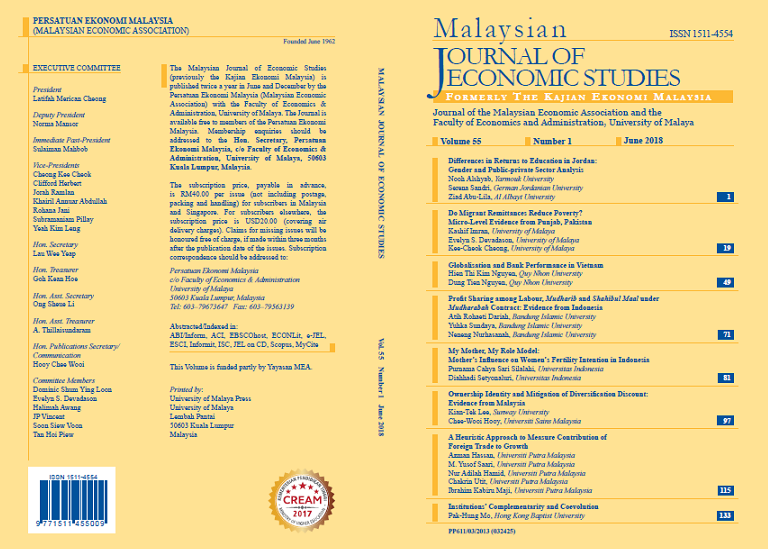Differences in Returns to Education in Jordan: Gender and Public-private Sector Analysis
DOI:
https://doi.org/10.22452/MJES.vol55no1.1Keywords:
gender wage differential, Jordan, public-private sector wage differential, returns to educationAbstract
Education is an investment and its returns in terms of increased wage can be used as an indicator for productivity in an economy. This paper analyses the relationship between education and earnings in Jordan in relation with gender and sector of employment (private versus public). Returns to education are estimated relying on a modification of the Mincer equation that takes into consideration gender and private versus public sector employment. The econometric analysis is based on the estimation of fixed effects models on a set of pseudo panel data covering the period between 2000 and 2015. The findings reveal that returns to education for male employees are higher than for female (the wage premium from one additional year of schooling is 6.8 percent for males and 5.5 percent for females) and that females get on average 74 percent of what males earn. We explain this result based on some peculiarities of female participation to the labour market in Jordan. It further emerges from the study that for male employees, wages in the private sector are 90 percent of the public sector, whereas for females, the private sector’s wages are 74 percent of those in the public sector.

